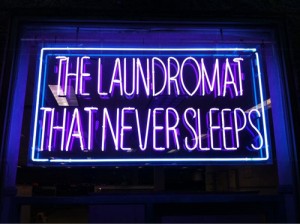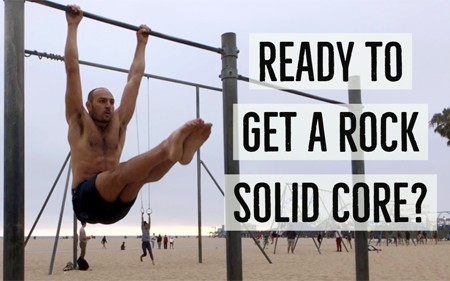Cellular respiration is the process by which organic compounds (preferably glucose) are broken apart, releasing energy that is used to produce ATP molecules. Cells need to have ATP because it’s the gasoline that powers all living things. ATP is a high energy nucleotide which acts as an instant source of energy within the cell.

Cellular respiration is like a change machine: you’re turning sugars into ATP so it will be a usable form of energy. If you go to a coin operated laundromat, they all seem to run on quarters for some reason. So you might say, “I don’t have any quarters but I want to wash my clothes and I have a $10 bill.” You put your $10 bill into the change machine and you get 40 quarters and now you could use the coin operated washers and dryers. All the chemical reactions in living things run off of these quarters (ATP). They don’t run off $10 bills (sugars/fats/proteins).
One glucose will give you as much as 38 ATP, similar to the way a $10 bill will give you 40 quarters. A fat molecule is more like a $100 bill because it has that much more energy.
Since ATP is found in all living things it’s sometimes called the energy currency of cells, which goes well with this laundromat analogy.
Here is the overall simplified reaction for aerobic respiration:
C6H12O6 + 6O2 —– enzymes & coenzymes ——> 6CO2 + 6H2O + Release of Energy (≤38 ATP) + Heat
In order to make ATP, you need food (sugar) and oxygen. If you don’t have food, you can’t make ATP and you’re going to die. Even if I brought in all the food in the world and then I diabolically suck all the oxygen out of this room, you’re still going to die. You need oxygen to unlock the energy that’s in the food. Cellular respiration also explains why we are breathing oxygen and why we exhale carbon dioxide.
In essence, the energy that was in covalent bonds of the glucose molecule is being released. In actuality, this process requires several steps because the sugar is broken down by baby steps, little by little, and is catalyzed many enzymes and coenzymes.
The efficiency of cell respiration
Nothing is perfectly efficient in this world. Even your car engine is only about 25% efficient at best. Only about 25% of the burned gasoline goes toward moving your car while the other 75% is given off as heat which is why your engine and exhaust systems are very, very hot.
Some nifty numbers here: There’s 686kcal (686,000 calories) in a mole of glucose. The actual usable energy obtainable from the 38 ATP molecules that may be produced from this glucose is 288,800 calories (38 x 7,600 calories per ATP). Therefore, the complete oxidation of glucose is only about 40% efficient (288/686). The other 60% goes off as heat. It’s impossible to convert one form of energy into another without creating heat. This release of heat is predicted by the law of thermodynamics. In other words, approximately 40% of the energy that’s created is used to phosphorylate ADP into ATP.
Furthermore, this reaction explains why the temperature of your body is almost 100°F. If you start to exercise, cellular respiration starts to speed up inside your muscle cells to produce more ATP, so your body starts breaking down sugars at a faster rate, you breathe oxygen at a faster rate and exhale carbon dioxide at a faster rate and give off a lot more heat at the same time.
Oxygen acts as a “hydrogen acceptor.”
What living things do is they take oxygen and transfer the hydrogens that come off of sugar molecules and stick them onto oxygen. When you attach a couple hydrogens onto an oxygen, you get water. For this reason, it is said that oxygen is a hydrogen acceptor.
We breathe in oxygen to remove the hydrogens off the sugars and fats otherwise the extra [H+] will cause the acidity to increase and proteins will unravel (denature) and die. Remember, an acidic solution is one that has more hydrogen ions (H+) than hydroxide ions (OH–).
Remember the mnemonic OIL RIG:
Oxidation: The glucose is being oxidized into carbon dioxide. OIL: Oxidation Is a Loss (of H+ and e–)
Reduction: Oxygen is reduced into water. RIG: Reduction Is a Gain (of H+ and e–)
One of the coenzymes that helps cellular respiration is NAD+, which contains the B Vitamin, Niacin.
Now that we’ve described the big picture and we understand that sugars are the principle form of food used to create ATP, now we could understand why having a healthy blood sugar level is so important. So let’s go off on a slight tangent and explain how the sugar levels in our blood remain constant before diving fully into cellular respiration.
Next post in the series: How are glucose levels regulated in the blood stream?
Cellular respiration
- Anabolic and Catabolic Reactions
- Intro to Cellular Respiration: The Production of ATP
- How Glucose Levels are Regulated in the Blood Stream
- Cell Respiration Part 1: Anaerobic Respiration (Glycolysis and Fermentation)
- Cell Respiration Part 2: Aerobic Respiration (Transition Reaction & Kreb’s Citric Acid Cycle)
- Cell Respiration Part 3: Aerobic Respiration (Electron Transport System)
- The Catabolism of Fats and Proteins for Energy
- The Catabolism of Nucleic Acids
- Oxygen Debt






